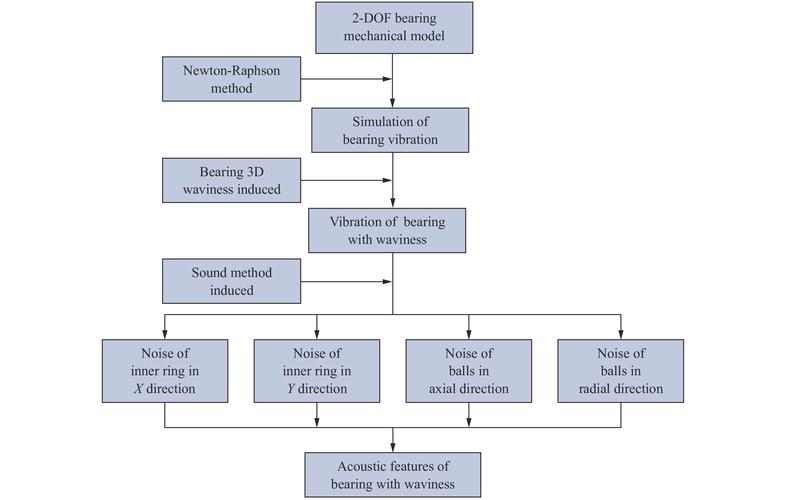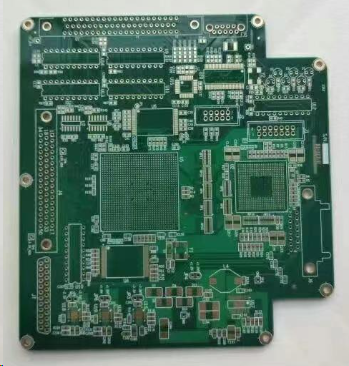Are you struggling with PCB surface finish defects like uneven HASL coating, ENIG black pad issues, OSP oxidation, or immersion silver tarnishing? This guide from ALLPCB offers practical solutions to identify, troubleshoot, and repair these common problems. Whether you're a PCB designer, manufacturer, or engineer, understanding and resolving surface finish defects is crucial for ensuring the reliability and performance of your printed circuit boards. Let’s dive into the details of these issues, explore their causes, and provide actionable steps for effective troubleshooting and repair.
Why PCB Surface Finishes Matter
PCB surface finishes play a vital role in protecting the copper traces on a board from oxidation and corrosion while ensuring proper solderability during PCB assembly. Without a suitable finish, the copper can degrade, leading to poor connections, reduced shelf life, and potential failures in the final product. However, even with the right finish, defects can occur due to improper application, environmental factors, or material issues. These defects not only affect the board’s appearance but also its functionality and longevity.
In this comprehensive guide, we’ll cover the most common PCB surface finish defects, including HASL uneven coating, ENIG black pad, OSP oxidation issues, and immersion silver tarnishing. We’ll also provide practical tips for troubleshooting and repairing these defects to help you maintain high-quality PCBs for your projects.

Common PCB Surface Finish Defects and Their Causes
Before diving into troubleshooting, it’s essential to understand the common types of surface finish defects and what causes them. Each finish type—whether it’s Hot Air Solder Leveling (HASL), Electroless Nickel Immersion Gold (ENIG), Organic Solderability Preservative (OSP), or Immersion Silver—has unique characteristics and potential issues. Let’s break down the most frequent defects associated with each.
1. HASL Uneven Coating
Hot Air Solder Leveling (HASL) is a widely used surface finish due to its affordability and good solderability. However, one common defect is uneven coating, where the solder layer varies in thickness across the board. This can lead to inconsistent soldering during assembly, causing weak joints or component misalignment.
Causes of HASL Uneven Coating:
- Improper air knife pressure during the HASL process, leading to inconsistent solder distribution.
- Contamination on the PCB surface before coating, preventing uniform adhesion.
- Inadequate flux application, which affects how solder flows over the copper.
- Variations in board design, such as densely packed areas versus open spaces, causing uneven heat distribution.
Impact: Uneven HASL coating can result in poor solder joint reliability, with studies showing that thickness variations as small as 1-2 micrometers can increase the risk of joint failure by up to 15% in high-stress applications.
2. ENIG Black Pad
Electroless Nickel Immersion Gold (ENIG) is a premium finish known for its excellent flatness and corrosion resistance. However, a notorious defect called "black pad" can occur, where the nickel layer beneath the gold becomes corroded, leading to a black or dark appearance. This defect often results in poor solderability and weak connections.
Causes of ENIG Black Pad:
- Excessive phosphorus content in the nickel layer, making it prone to corrosion during the gold plating process.
- Improper control of the immersion gold bath, leading to aggressive etching of the nickel layer.
- Contamination in the plating solution, which can disrupt the chemical balance.
- Inadequate rinsing between plating steps, leaving residues that cause corrosion.
Impact: Black pad defects can lead to a 20-30% reduction in solder joint strength, significantly increasing the likelihood of field failures in critical applications like aerospace or medical devices.
3. OSP Oxidation Issues
Organic Solderability Preservative (OSP) is an eco-friendly, cost-effective finish that provides a thin organic layer over copper to prevent oxidation. However, OSP is prone to oxidation itself if exposed to high humidity or prolonged storage, leading to a tarnished appearance and reduced solderability.
Causes of OSP Oxidation Issues:
- Exposure to moisture or high temperatures, which degrades the organic coating over time.
- Improper storage conditions, such as leaving boards unpackaged in humid environments.
- Insufficient coating thickness, typically below 0.2 micrometers, failing to provide adequate protection.
- Handling contamination, such as fingerprints or oils, which can break down the OSP layer.
Impact: Oxidized OSP surfaces can increase soldering defects by up to 25%, as the degraded layer prevents proper wetting of solder during assembly.
4. Immersion Silver Tarnishing
Immersion Silver is a popular finish for its excellent solderability and flatness, but it is highly susceptible to tarnishing due to sulfur or chloride exposure in the environment. Tarnished silver appears yellow or brown and can hinder soldering performance.
Causes of Immersion Silver Tarnishing:
- Exposure to sulfur-containing environments, such as near industrial areas or during storage in unsealed packaging.
- High humidity levels accelerating the reaction between silver and environmental contaminants.
- Inadequate anti-tarnish treatment after the silver plating process.
- Prolonged shelf life without proper protective packaging, leading to surface degradation.
Impact: Tarnished immersion silver can reduce solder joint reliability by 10-15%, as the tarnish layer creates a barrier between the solder and the underlying metal.
Troubleshooting PCB Surface Finish Defects
Now that we’ve identified the common defects and their causes, let’s explore practical troubleshooting steps to diagnose and address these issues. The goal is to pinpoint the root cause of the defect and apply corrective measures to prevent recurrence.
Troubleshooting HASL Uneven Coating
- Inspect the Coating Process: Check the air knife settings during the HASL process. Ensure the pressure is consistent, typically between 2-4 psi, to achieve uniform solder distribution.
- Clean the PCB Surface: Before applying HASL, ensure the board is free of contaminants. Use a pre-cleaning step with a solution like isopropyl alcohol to remove oils or residues.
- Optimize Flux Application: Verify that the flux is applied evenly, with a thickness of about 1-2 micrometers, to ensure proper solder flow.
- Review Board Design: If uneven coating persists in specific areas, consider adjusting the design to balance thermal mass across the board, reducing hot spots during soldering.
Troubleshooting ENIG Black Pad
- Analyze Nickel Composition: Test the nickel layer for phosphorus content. Aim for a range of 7-9% phosphorus to minimize corrosion risk during gold plating.
- Monitor Gold Bath Parameters: Ensure the immersion gold bath operates within recommended pH (4.5-5.5) and temperature (80-85°C) ranges to prevent excessive nickel etching.
- Improve Rinsing Steps: Implement thorough rinsing with deionized water between plating stages to remove any chemical residues.
- Conduct Visual and Microscopic Inspection: Use a microscope at 50x magnification to detect early signs of black pad before assembly, allowing for rework if needed.
Troubleshooting OSP Oxidation Issues
- Check Storage Conditions: Store OSP-finished PCBs in vacuum-sealed bags with desiccants to minimize exposure to humidity. Maintain storage temperatures below 30°C.
- Verify Coating Thickness: Use a coating thickness gauge to ensure the OSP layer is at least 0.2-0.5 micrometers thick for adequate protection.
- Limit Handling: Train staff to wear gloves when handling OSP boards to avoid contamination from skin oils.
- Reapply OSP if Needed: If oxidation is detected before assembly, consider stripping the old layer with a mild acid solution and reapplying OSP under controlled conditions.
Troubleshooting Immersion Silver Tarnishing
- Assess Environmental Exposure: Identify if boards are stored or assembled in sulfur-rich environments. Use sulfur-free packaging materials to reduce tarnishing risk.
- Apply Anti-Tarnish Treatment: Ensure an anti-tarnish coating is applied immediately after silver plating, with a typical thickness of 0.1 micrometers.
- Control Storage Conditions: Keep humidity levels below 50% in storage areas and use sealed packaging to protect boards from airborne contaminants.
- Perform Surface Testing: Use a tarnish test (e.g., exposure to hydrogen sulfide gas under controlled conditions) to evaluate the silver layer’s resistance to degradation.

PCB Defect Repair: Practical Solutions
While prevention is ideal, sometimes defects occur despite best efforts. In such cases, repairing the PCB surface finish can save time and resources. Below are practical repair methods for each defect type, ensuring the board remains functional for assembly and use.
Repairing HASL Uneven Coating
For minor unevenness, localized rework can be effective. Use a soldering iron with a fine tip to apply additional solder to thin areas, ensuring a uniform layer. Maintain a temperature of 260-300°C to avoid damaging the board. For severe cases, consider stripping the HASL layer using a solder stripper solution and reapplying the finish under controlled conditions.
Repairing ENIG Black Pad
Repairing black pad defects is challenging due to the underlying nickel corrosion. If the defect is localized, remove the affected gold and nickel layers using a chemical etchant, then replate the area with fresh nickel and gold. For widespread issues, it may be more cost-effective to scrap the board and adjust the plating process for future batches.
Repairing OSP Oxidation Issues
Oxidized OSP layers can often be repaired by gently cleaning the surface with a mild acid solution (e.g., 5% citric acid) to remove the degraded layer. After cleaning, dry the board thoroughly and reapply a fresh OSP coating using a dip process. Ensure the board is assembled promptly to avoid re-oxidation.
Repairing Immersion Silver Tarnishing
For tarnished immersion silver, use a silver cleaner or a mild abrasive pad to remove the tarnish layer, exposing fresh silver underneath. Be cautious not to over-scrub, as this can remove too much silver, typically reducing the layer thickness by 0.05-0.1 micrometers per cleaning cycle. After cleaning, apply an anti-tarnish coating and store the board properly.

Preventing PCB Surface Finish Defects
While troubleshooting and repair are essential skills, preventing defects in the first place saves time and costs. Here are some best practices to minimize the risk of surface finish issues:
- Quality Control in Manufacturing: Implement strict process controls for surface finish application, including regular calibration of equipment and testing of chemical baths.
- Proper Storage: Store finished PCBs in controlled environments with low humidity (below 50%) and minimal exposure to contaminants.
- Material Selection: Choose surface finishes based on the application’s environmental and performance requirements. For example, use ENIG for high-reliability applications despite its cost, or OSP for short-shelf-life, cost-sensitive projects.
- Training and Handling: Train personnel on proper handling techniques to avoid contamination, and use protective gear like gloves when working with sensitive finishes like OSP or immersion silver.
Conclusion
PCB surface finish defects like HASL uneven coating, ENIG black pad, OSP oxidation issues, and immersion silver tarnishing can pose significant challenges in manufacturing and assembly. However, by understanding their causes, applying systematic troubleshooting methods, and using effective repair techniques, you can maintain the quality and reliability of your PCBs. At ALLPCB, we’re committed to supporting engineers and manufacturers with resources and expertise to tackle these issues head-on. By following the practical steps outlined in this guide, you can minimize defects, reduce rework, and ensure your boards meet the highest standards of performance.
Whether you’re dealing with a specific defect or looking to improve your overall process, the key is to stay proactive. Implement robust quality controls, store boards properly, and choose the right surface finish for your application. With these strategies, you’ll be well-equipped to handle any surface finish challenge that comes your way.

 ALLPCB
ALLPCB







